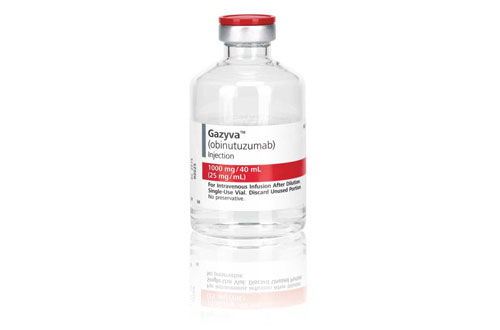
A NICE ruling means that around 600 people in the UK with hard-to-treat follicular lymphoma could be eligible for treatment with Roche’s Gazyvaro via the Cancer Drugs Fund (CDF).
The recommendation delivered by NICE this morning means that Gazyvaro (obinutuzumab) can be used in combination with chemotherapy to treat patients with follicular lymphoma that has not responded to treatment based on Roche’s MabThera (rituximab) – and as monotherapy for maintenance thereafter – via the CDF.
The cost-effectiveness watchdog turned down routine use of the drug on the NHS for follicular lymphoma last September, saying that its benefits on overall survival were unclear.
Like MabThera, Gazyvaro targets the CD20 receptor but has been designed with sugar molecule side chains that improve its therapeutic and safety profile. It was approved in the EU as a follicular lymphoma treatment last year, its second indication after chronic lymphocytic leukaemia (CLL).
NICE cleared Gazyvaro as a routine NHS treatment option for adults with CLL two years ago.
While effective treatments exist for follicular lymphoma, the disease often comes back and becomes increasingly aggressive and resistant to existing treatment options. Patients whose disease has become aggressive often die after one to two years.
In recommending Gazyvaro, NICE has agreed that the drug can be provided via the CDF for a four-year period, while data from ongoing trials of the drug in relapsed refractory follicular lymphoma matures and reveals whether the drug can maintain a positive impact on overall survival. It’s a boost for Roche, which has seen several of its new oncology drugs rejected by NICE of late.
“Gazyvaro is one of the first in a series of innovative therapies that are expected to be considered by NICE this year via the new appraisal process for cancer medicines, and it could make a significant difference to patient outcomes across England,” commented Richard Erwin, general manager of Roche UK.
“This decision from NICE is encouraging in terms of the flexibility of the new NICE and CDF system, where collecting the right data across a realistic time-frame, in this case four years, is the key to demonstrating the value of Gazyvaro in the long-term,” he added.
Sales of the drug have been growing slowly, rising from $130m in 2015 to around $200m last year and $67m in the first quarter of the year. It is still dwarfed by MabThera, which pulled in more than $7bn last year and remains Roche’s biggest drug though it is now facing the start of biosimilar competition, and has a long way to go to reach earlier blockbuster sales productions.
Roche’s hopes of extending its indications into another haematological malignancy called diffuse large B-cell lymphoma (DLBCL) were dashed last year after the drug failed a late-stage trial.




